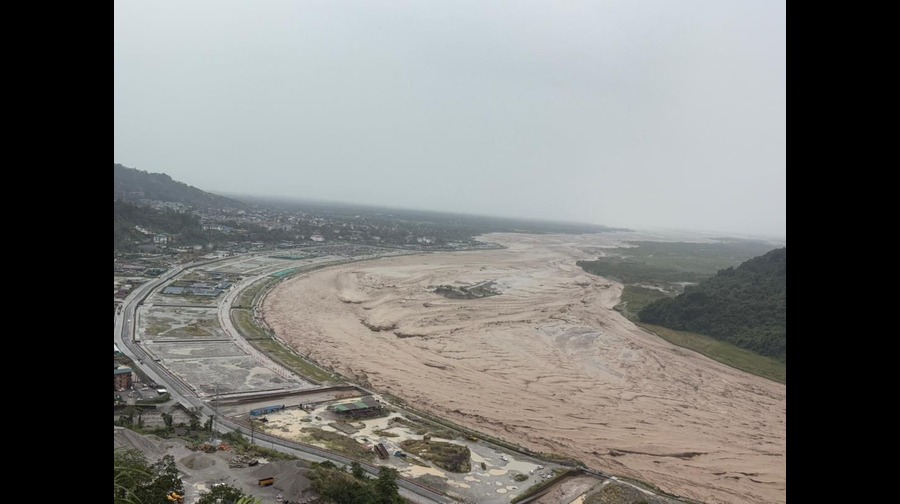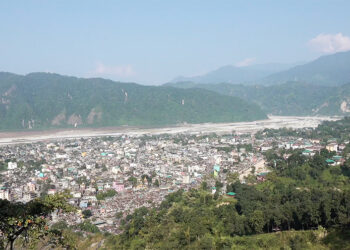
The country experienced an extremely heavy downpour last night, with Samtse and Phuentshogling receiving the heaviest showers. According to the National Centre for Hydrology and Meteorology, the unusual weather event was caused by a low-pressure system, possibly intensified by climate change. But there might be some relief. The centre said though light showers may continue, the weather is expected to improve in the coming days.
The National Centre for Hydrology and Meteorology or NCHM said the unexpected weather event was caused by a low-pressure system that developed over the Bay of Bengal in India recently and gradually moved into Bhutan, bringing heavy rain across southern and western parts of the country.
A low-pressure system happens when warm air goes up into the sky. As it rises, cool air moves in to take its place. This movement of air forms clouds and often causes rain or storms.
Singay Dorji, the Chief of Meteorological Service Division, NCHM said, “We did not forecast heavy rainfall as the low-pressure system was expected to enter India and normally dissipate. However, after moving through Bihar, the system reached Nepal. Again, it was expected to weaken, so heavy rainfall was not anticipated.”
He added that, according to their readings, the low-pressure system is expected to dissipate by tomorrow, bringing an improvement in the weather.
“The monsoon has not completely withdrawn, so another system is developing over the Arabian Sea. Since the monsoon season has not fully ended, light rainfall is likely to continue.”
Further, he said these kind of weather events can be attributed to climate change.
“Climate change is causing heavy, high-intensity rainfall, unlike before when rain was lighter and lasted longer. Now, rainfall often comes in short bursts lasting just half an hour to an hour. Urban drainage systems are not designed for such sudden downpours, leading to blockages. Similarly, the recent flood in Dechencholing, and incidents like these are becoming increasingly common.”
The NCHM told BBS that there are challenges in making precise weather forecasts due to the absence of a weather radar which costs over 10 million US dollars and limited technical expertise.
Meanwhile, following yesterday’s weather event, Samtse recorded 302 millimetres of rainfall, Phuentshogling 285 mm, Haa 83.8 mm, Paro 72 mm, and Thimphu over 57 millimetres of rainfall. To put this in context, last year’s heaviest rainfall in 24 hours was recorded at Phuentshogling with a little over 210 millimetres according to the State of Climate Report 2024.









